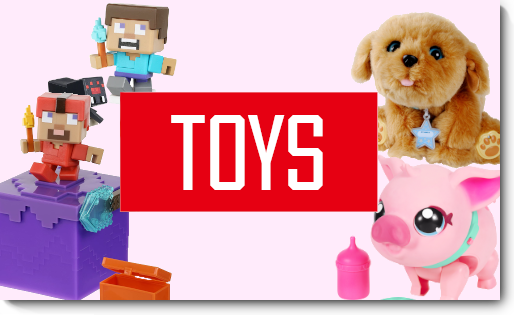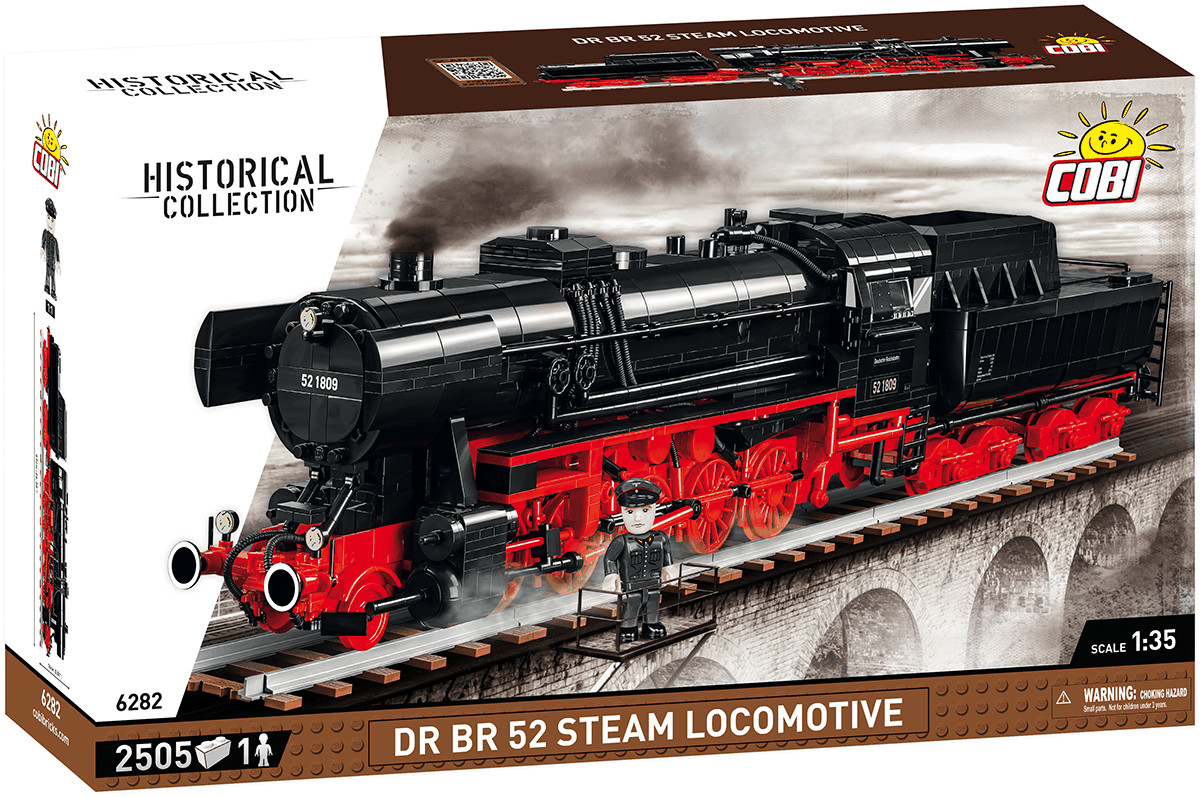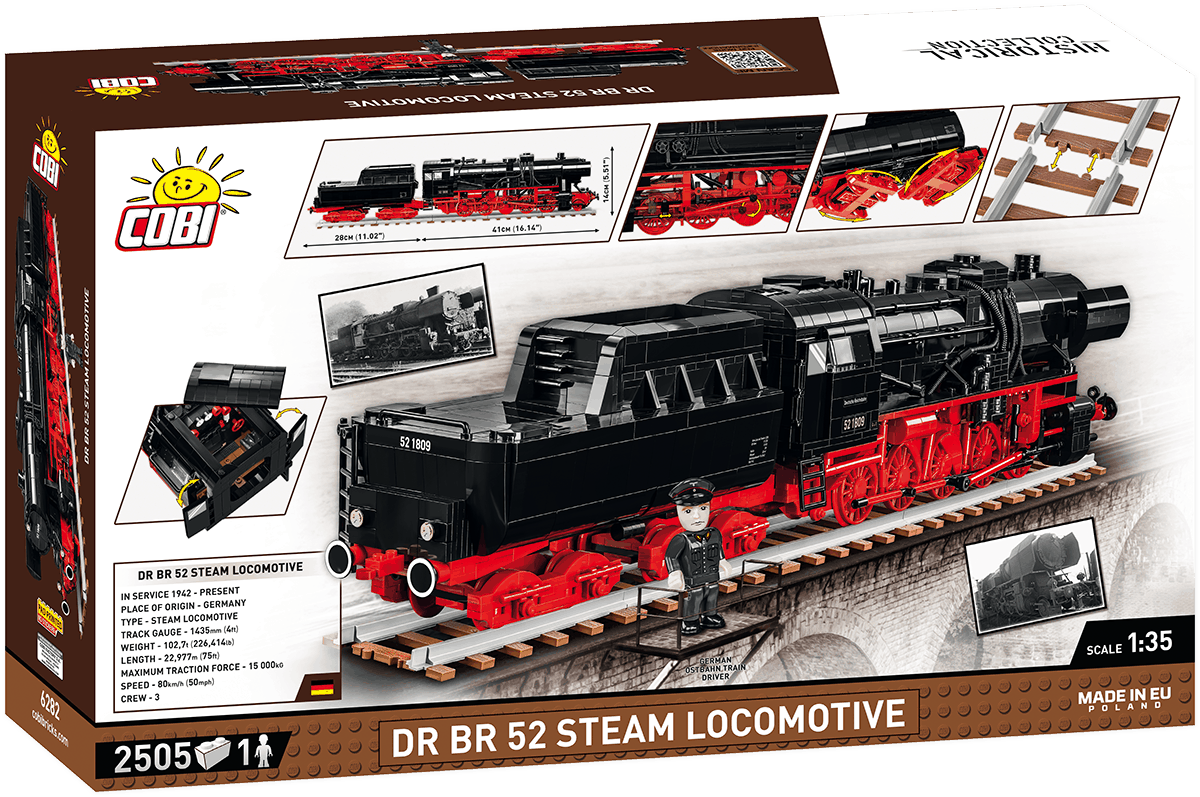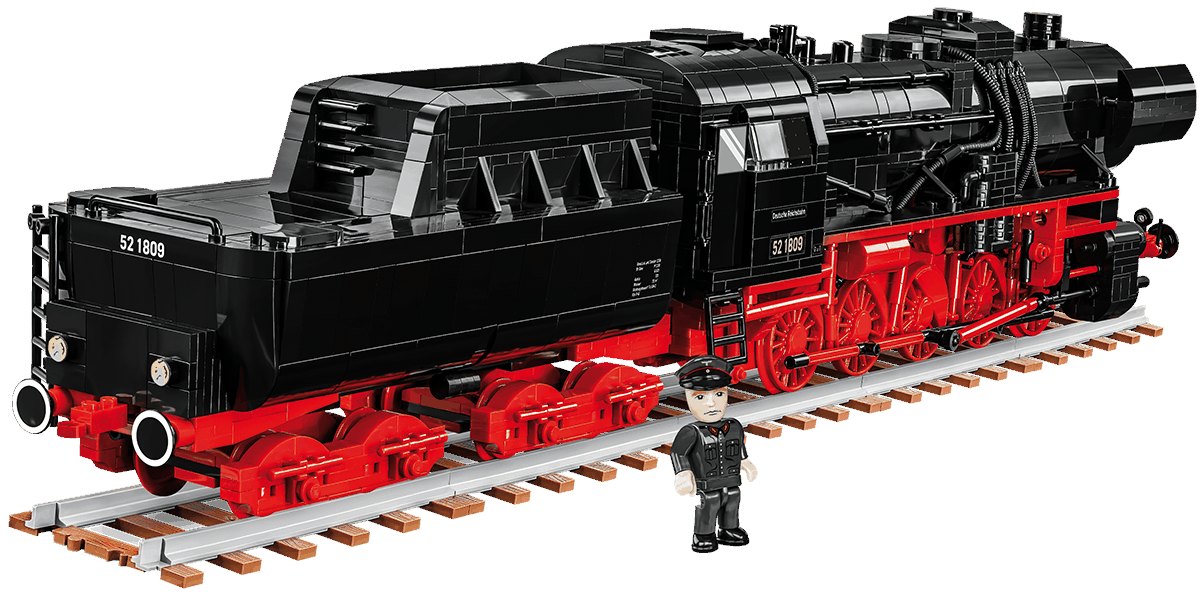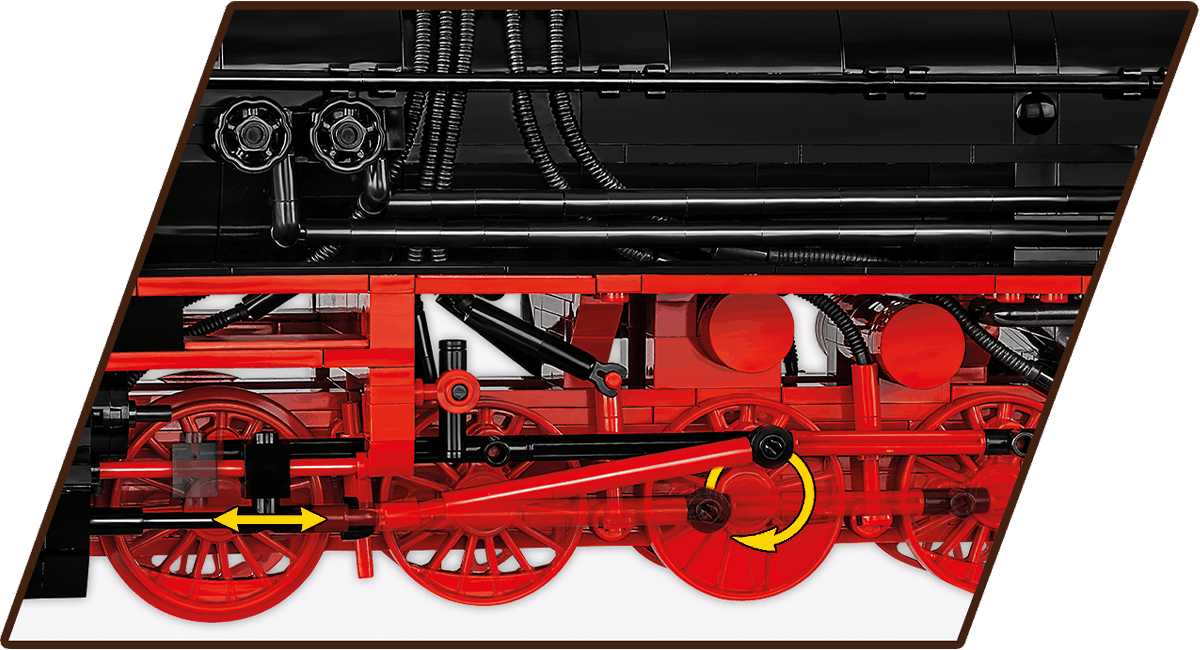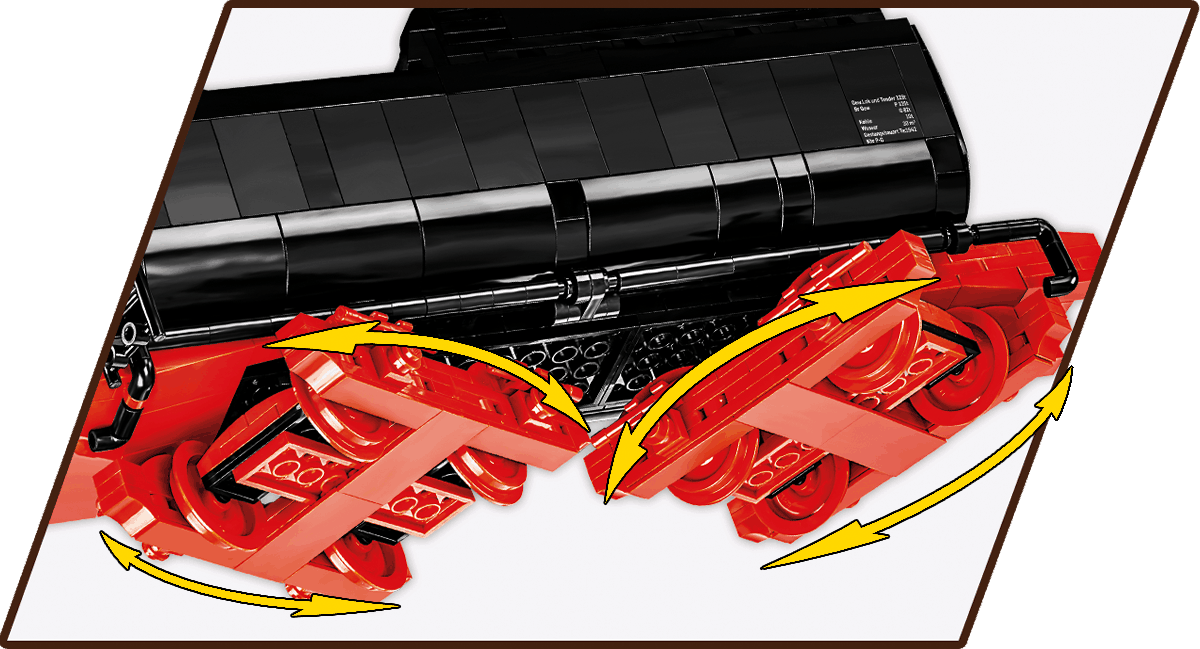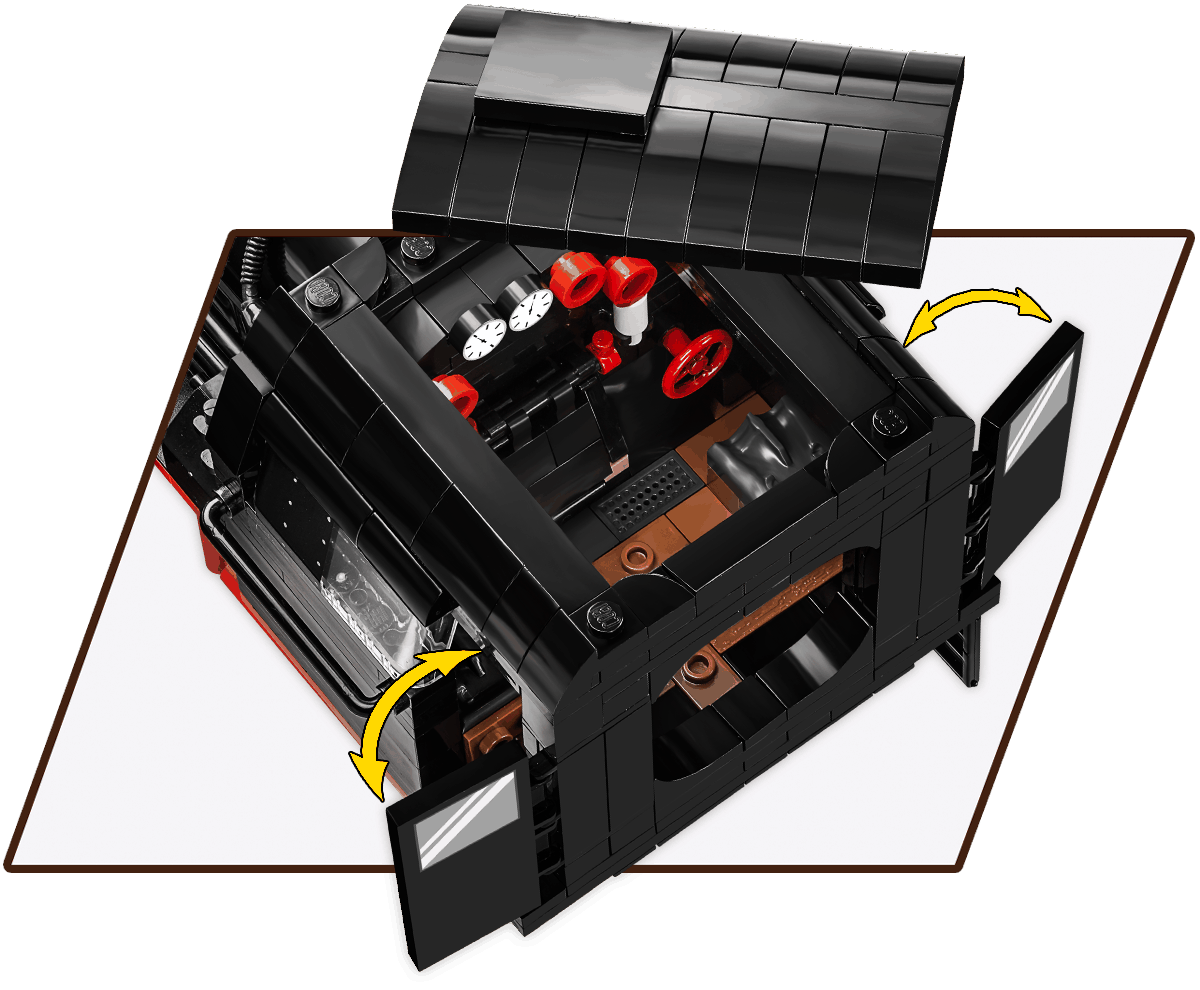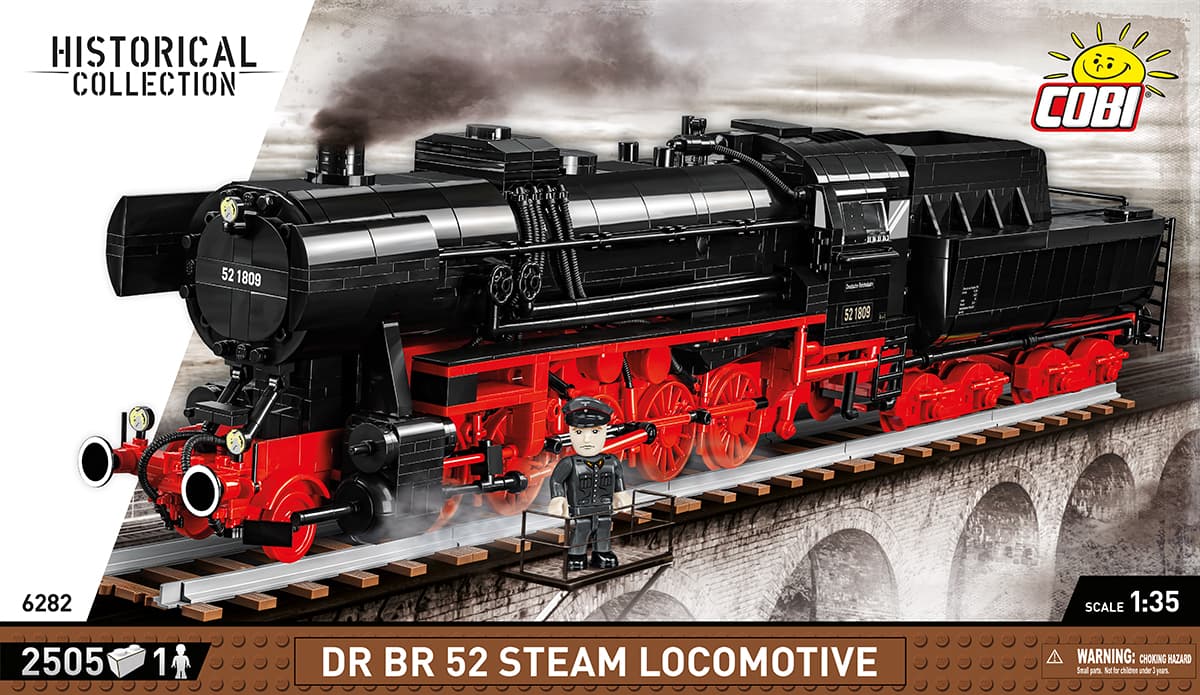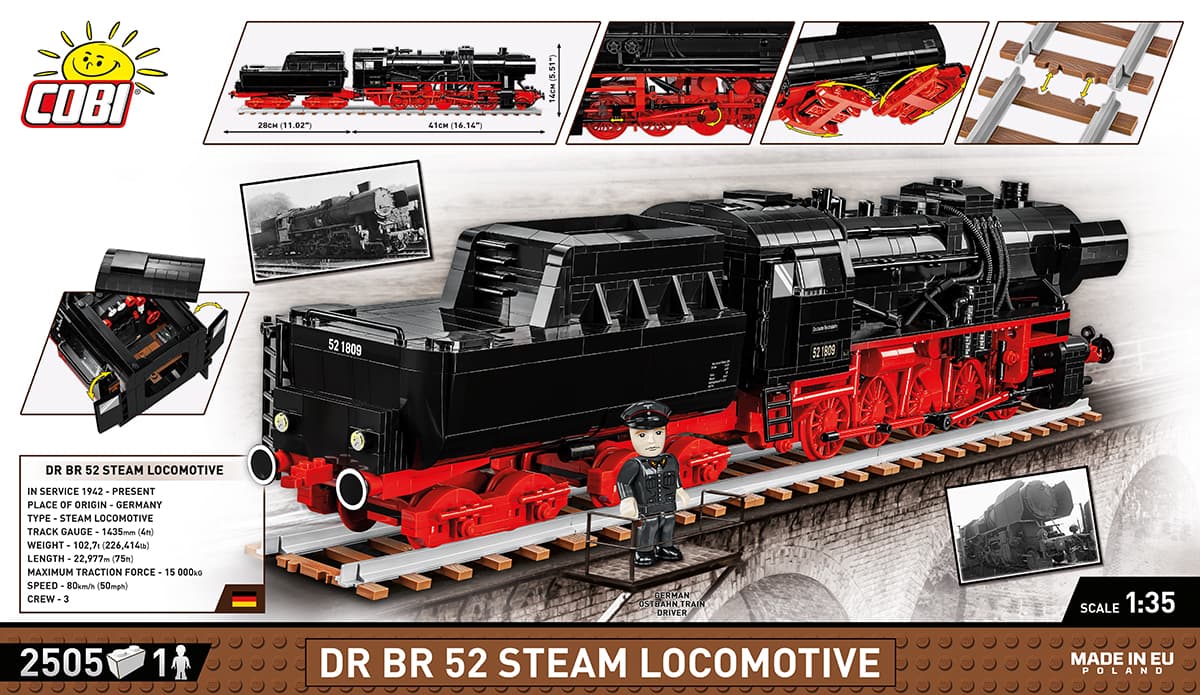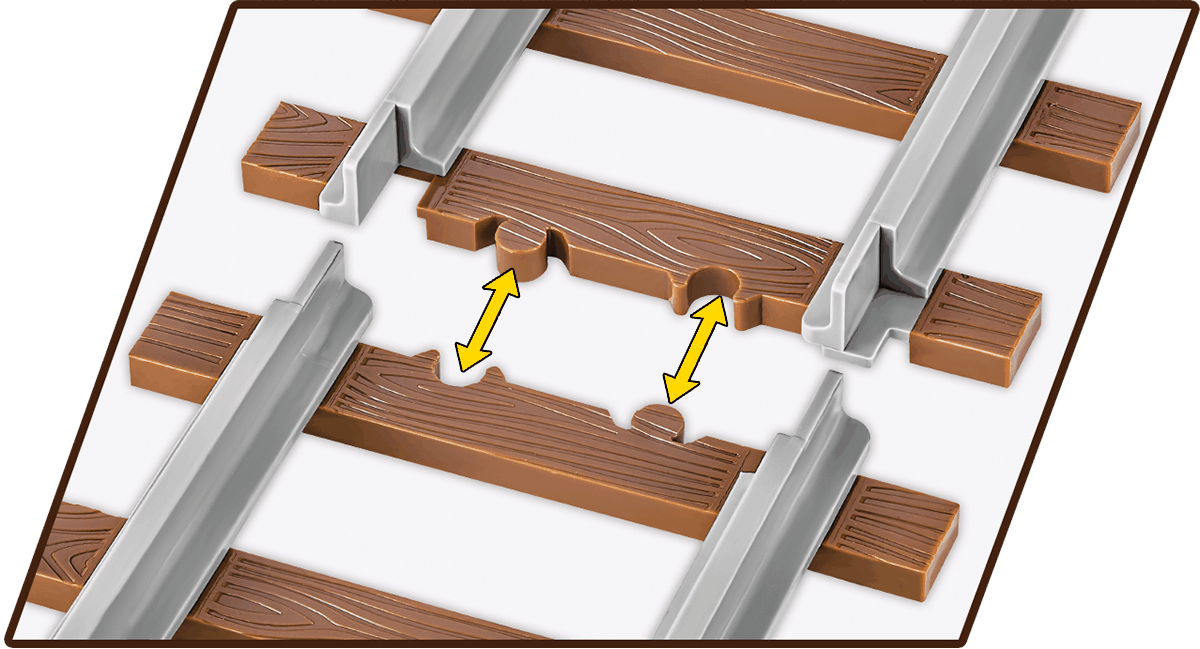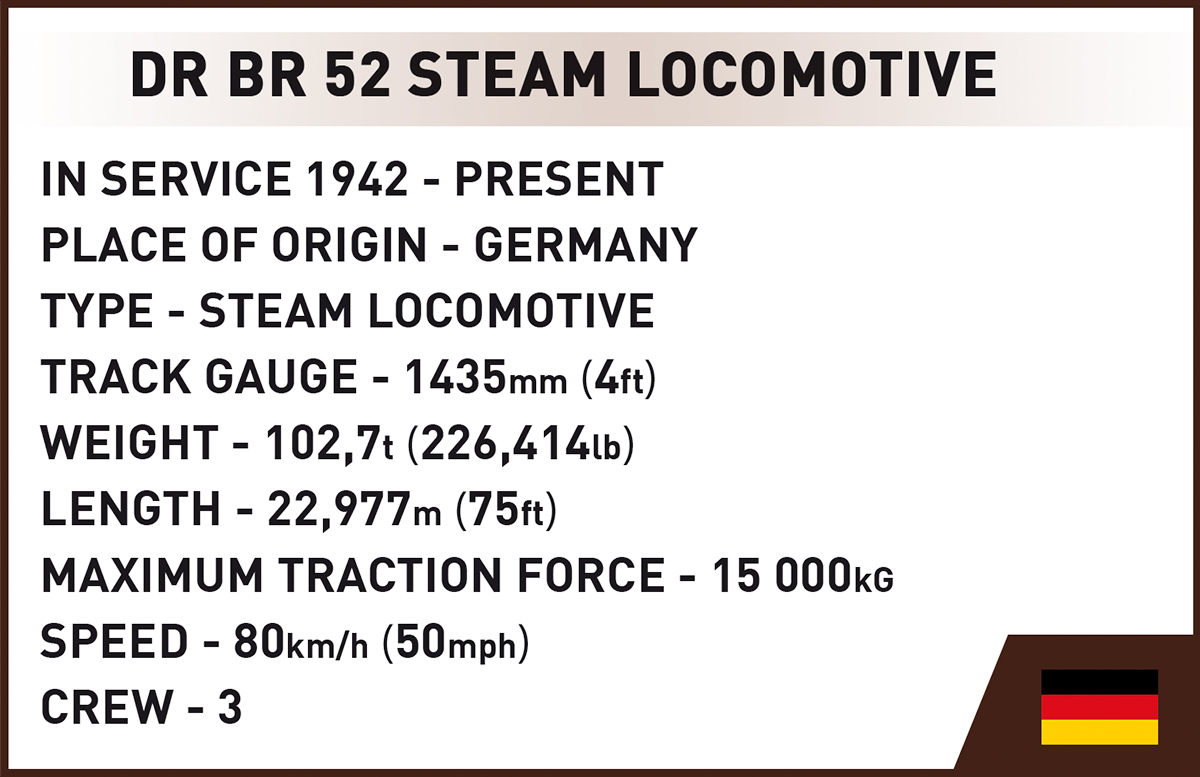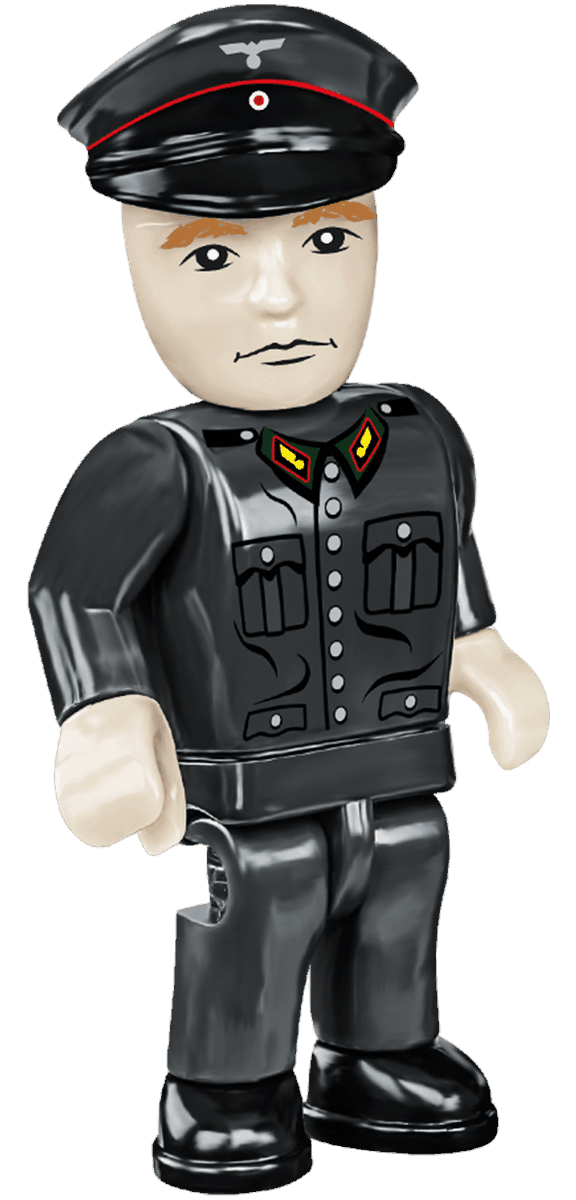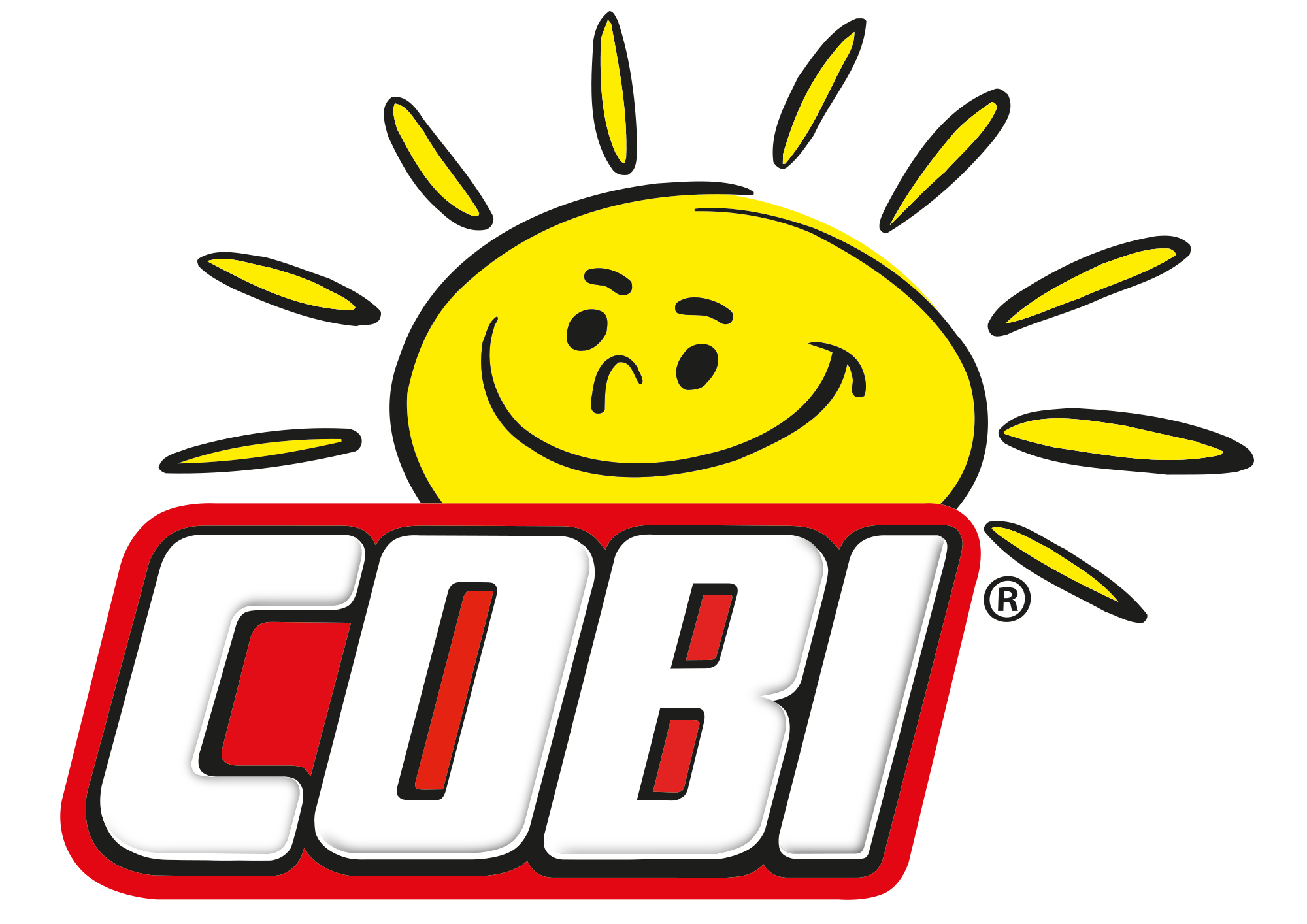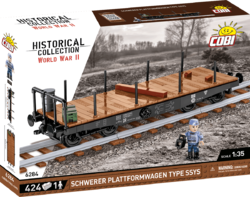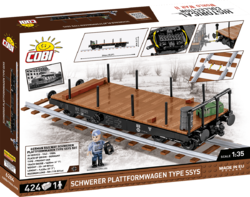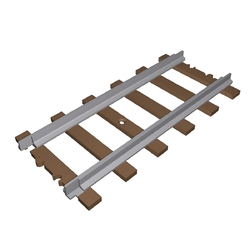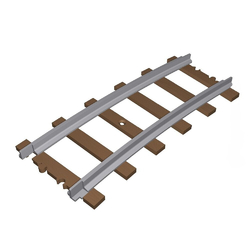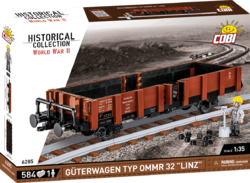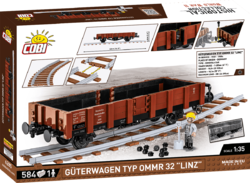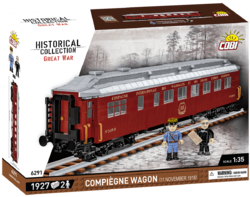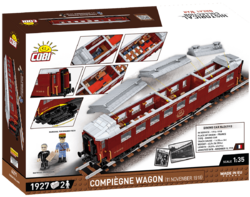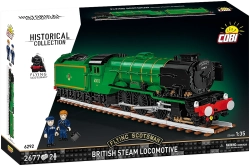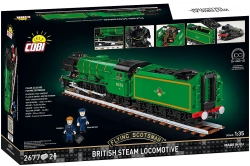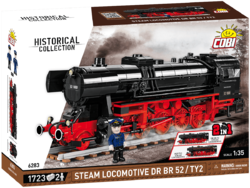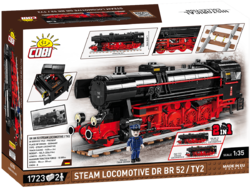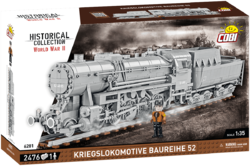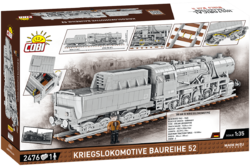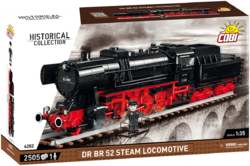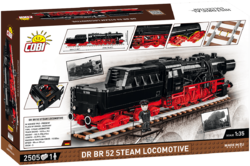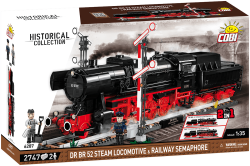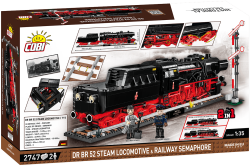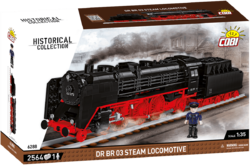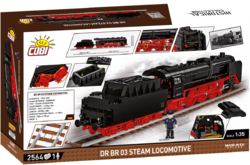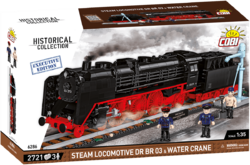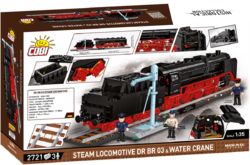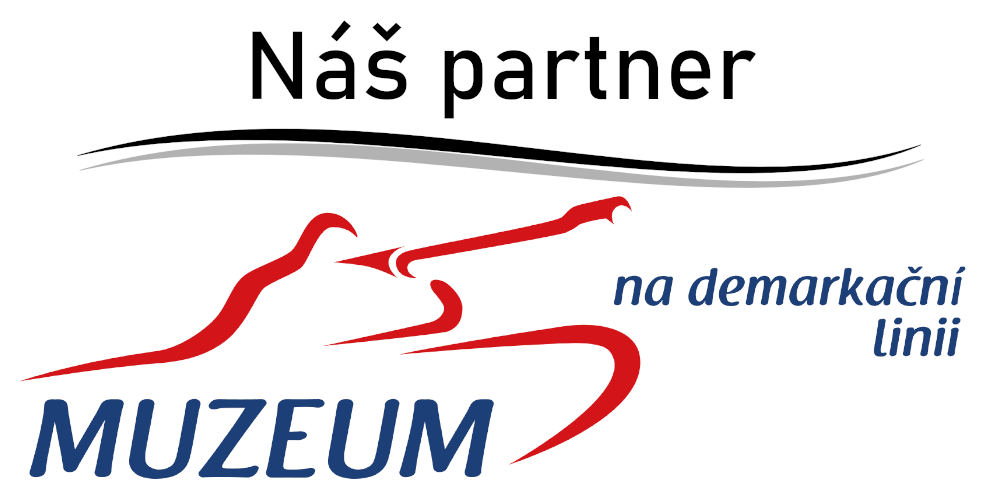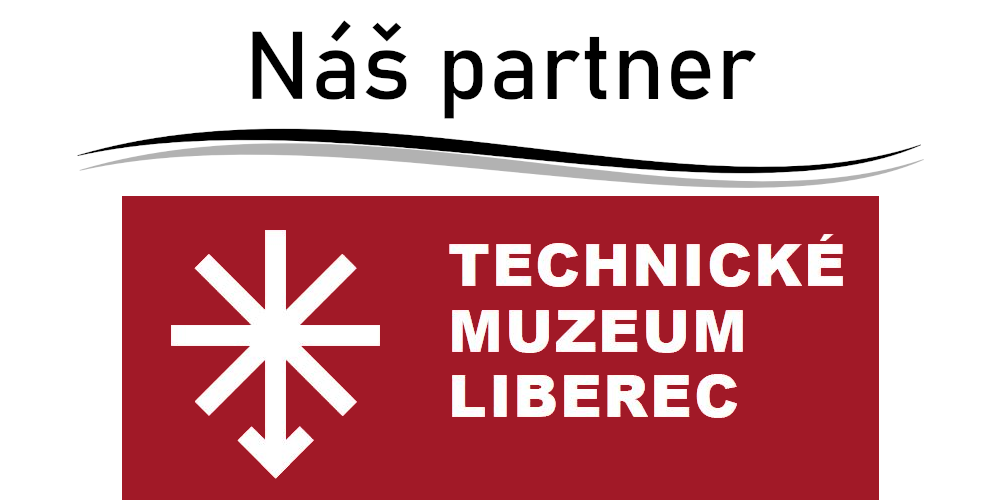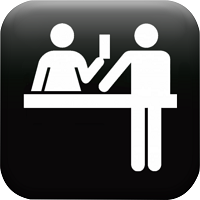A model kit of the famous German-built DRB series 52 steam locomotive with the markings of German or Polish railways, including an attached train tender. Thanks to the removable roof, it is possible to look into the equipped engine room. The parts imitating the fire in the locomotive's furnace are a beautiful detail. The model's wheels are coupled and contain several gears. Everything moves when driving. The package also includes five segments of a realistic-looking track with sleepers in wooden decor and the upper superstructure of the track with a total length of 69 cm. The track segments have holes for possible assembly to the base of a railway diorama. Also included is a figure of a German and Polish train driver in uniform. The model is fully compatible with the track system of other kits and handles the R88 curvature. The model is equipped with towing hitches, so it is possible to attach additional cars to the locomotive.
Show more
0 %
(0 Ranking)
4 581 Kč
pcs
Add to Cart
In stock - ready to ship
| List Number: | COBI-6280 |
| EAN: | 5902251062804 |
| Warranty: | 24 months |
| Manufacturer: | COBI |
| Loyalty Points: | 25 |
| Price excluding VAT: | 3 785,90 Kč |
Description
Parametres
Files and Links
Discussion
Reviews

Did you know: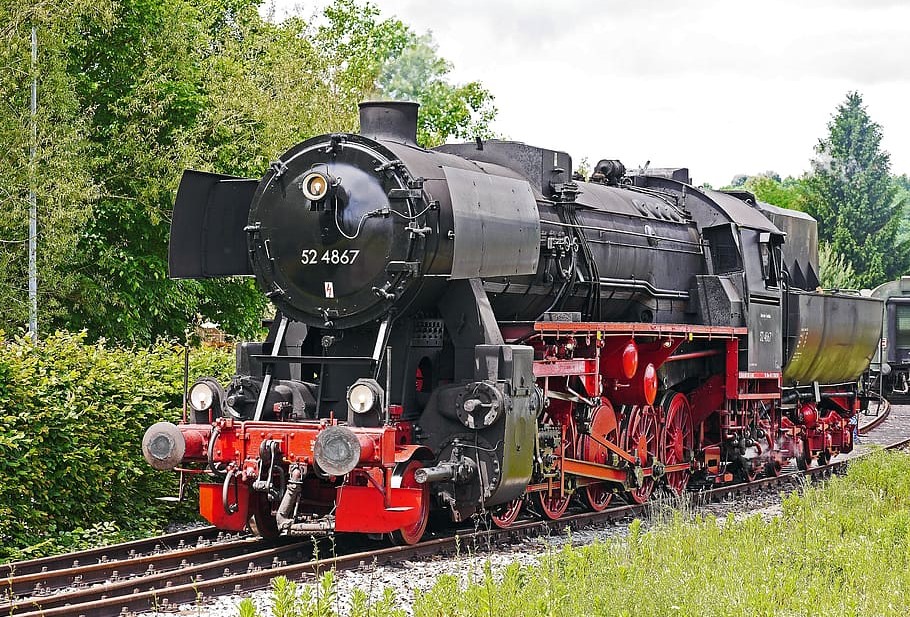
- The first locomotive of series 52, number 52.001, was completed by the German company Berliner Maschinenbau on September 12, 1942.
- Immediately after completion, the train with eight wagons embarked on a 5000 km long test journey across occupied territories of Europe.
- The locomotive designers aimed for significant simplification suitable for rapid production, resulting in a steam locomotive made of approx. 5000 parts—1000 fewer than the previous series 50 model.
- The machine was primarily intended for wartime logistics of the German Reich Railways and was produced in large numbers in many European factories such as Henschel, Schwartzkopp, Ciegelski, and also Škoda Plzeň.
- Series 52 locomotives were popular in Czechoslovakia, where they earned the nickname "the German lady".
- A major advantage was the enclosed cabin, which provided greater comfort for the crew, especially in winter.
- The T32 bathtub-type tender carried coal and water supplies. Steam locomotives consume 7–8 times more water than coal, which was reflected in the size of the reservoirs.
- An interesting technical feature of the attached tender allowed full-speed reverse travel.
- With the arrival of diesel locomotives, series 52 gradually became obsolete, and the last unit was produced in 1950.
- They remained in service the longest in Turkey, operating on older tracks around Izmir until the 1980s.
- The exact number of units produced is unknown. According to surviving records, approximately 6,285 units were built.
Technical specifications of the locomotive: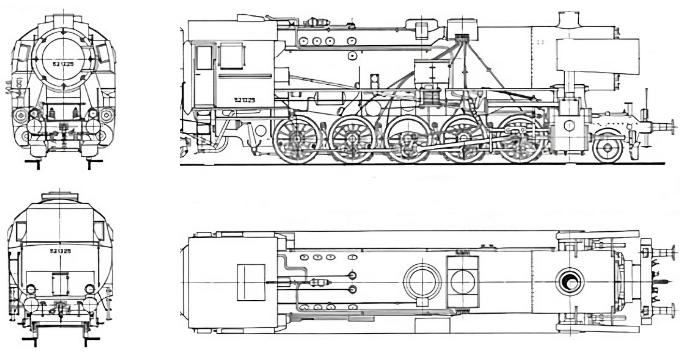
- dimensions: length 22.98 m, height 4.4 m, gauge 1435 mm
- weight 102,700 kg
- water capacity 30 m³
- firebox area 193.7 m²
- steam drive system with output of 1,192 kW at 16 bar steam pressure
- maximum speed 80 km/h
- tractive force 15,000 kg
- maximum weight of hauled train 635,000 kg
Technical specifications of the tender:
- length 11.1 m
- total weight 70,000 kg
- water capacity 32 m³
- coal capacity 11–22 tons (depending on type)
- maximum approved speed 80 km/h
Chief engineer Friedrich Witte on the BR 52 locomotive (1975):
"We wanted to design a reliable and inexpensive machine for any railway job. We developed everything so the machine would last 5 years of continuous operation. I think we succeeded. I'm seventy-five and the machines are still running.""
| Version (series) | 03/2023 |
|---|---|
| Scale | 1 : 35 |
| Recommended age | 10+ |
| Number of figurines | 2 pcs |
| Number of pieces | 2623 pcs |
| Package weight | 2950 g |
| Box dimensions | 55 x 32 x 12 cm |
| Dimensions after assembly | 69 x 10 x 14 cm |
| Collection | Historie |
| Contains luminous blocks | No |
| Material | Plastic |
| Compatible with other brand of kits | Yes |
Discussion is empty.
There is no review for product yet






